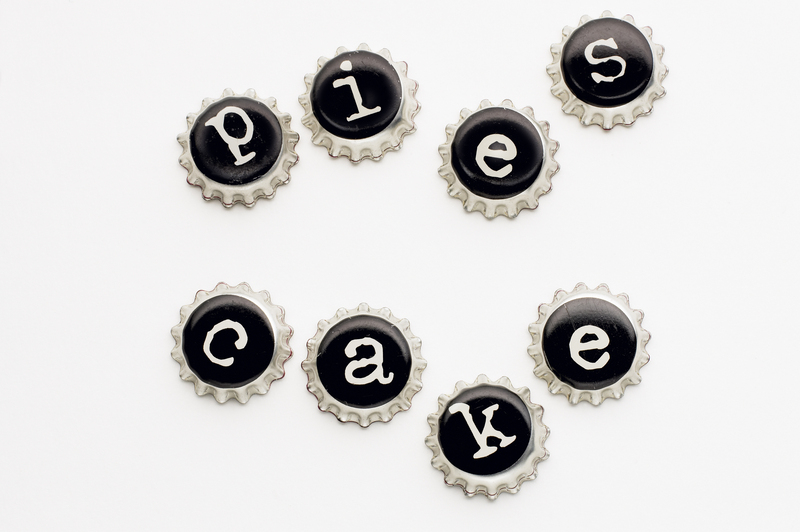A Detailed Guide on the Mechanics of Plastic Recycling
Plastic recycling is an essential practice in today's world. As the demand for plastic products rises, so does the amount of plastic waste polluting our planet. To foster a sustainable environment, it's critical to understand the mechanics of plastic recycling, the various recycling processes, and how individuals and industries can contribute to a more responsible cycle. This comprehensive guide will cover the entire journey of plastic recycling, from collection to the creation of new products.
Understanding Plastic Recycling: An Overview
Plastic recycling involves collecting and processing plastic waste into new, useful products instead of dumping or incinerating them. This recycling process reduces environmental pollution, conserves resources, and saves energy compared to producing virgin plastics. Not all plastics are recyclable, and the methods vary based on the type of plastic and contaminants present.
The Importance of Plastic Recycling
- Reduces Environmental Impact: Recycling minimizes landfill waste and plastic pollution in oceans and rivers.
- Conserves Resources: It preserves raw materials and decreases the need for new plastic production.
- Saves Energy: Manufacturing products from recycled plastic uses less energy than producing them from raw materials.
- Mitigates Climate Change: Lower energy consumption means reduced greenhouse gas emissions.
Mechanical plastic recycling is just one aspect of the broader plastics management system, which also includes chemical recycling, energy recovery, and reduction strategies. Let's dive deeper into the plastic recycling mechanisms and how these processes meet the global challenge of plastic waste.

Types of Plastics and Their Recyclability
Not all plastic types are created equal--some are much easier to recycle than others. Plastics are typically classified with a resin identification code (RIC), a number stamped on products, outlining the type of polymer used.
Common Types of Plastics
- Polyethylene Terephthalate (PET or PETE) - Code 1: Used for bottles, food containers. Highly recyclable.
- High-Density Polyethylene (HDPE) - Code 2: Found in milk jugs, detergent bottles. Widely recycled.
- Polyvinyl Chloride (PVC) - Code 3: Used in pipes, some packaging. Difficult to recycle.
- Low-Density Polyethylene (LDPE) - Code 4: Used in bags and wraps. Less frequently recycled.
- Polypropylene (PP) - Code 5: Used in yogurt containers, caps. Increasingly recycled.
- Polystyrene (PS) - Code 6: Common in disposable utensils, foam cups. Rarely recycled.
- Other (Code 7): A catch-all for mixed plastics and bioplastics. Typically unrecycled.
Knowing these codes helps consumers and manufacturers sort plastics correctly and improves the effectiveness of the recycling process.
How Does Plastic Recycling Work? The Journey from Bin to Product
The steps in plastic recycling involve several important stages to separate, clean, and reprocess plastics into usable forms. Here's an in-depth look at each phase:
1. Collection and Sorting
- Collection: Plastic waste is gathered from homes, businesses, public bins, and industrial sites by municipal or private haulers.
- Sorting: At material recovery facilities (MRFs), plastics are sorted by type and color using manual labor, machines, and near-infrared spectroscopy.
Proper sorting is crucial; mixing different types of plastics can contaminate the batch and reduce the quality of recycled products.
2. Cleaning and Pre-processing
- Plastics are washed to remove labels, adhesives, food residues, and dirt.
- Depending on the facility, the plastics may be shredded into flakes or pellets before or after washing to aid processing.
- Some facilities use float-sink tanks to separate plastics based on density.
Effective cleaning ensures that the recycled plastic will be free from contaminants, maximizing its utility in new products.
3. Processing and Melting
- Shredding: Plastics are cut into small flakes or pellets to increase surface area for melting and further processing.
- Melting: The plastic pieces are heated to their melting point in an extruder.
- Filtering: The molten plastic is filtered to remove any remaining impurities.
This process is known as mechanical recycling, where the chemical structure of the plastic remains mostly unchanged but is physically converted into reusable forms.
4. Forming New Products
- Extrusion: The molten plastic is forced through a die to create plastic filaments, sheets, or pellets for use in manufacturing.
- Molding: Recycled plastic can then be molded or shaped into new bottles, containers, textiles, and other products.
- Quality check: Finished products are tested for durability and safety before distribution.
The cycle repeats as these products, after their useful life, can be again collected for recycling, provided they are made from recyclable polymers.
Advanced Methods in Plastic Recycling: Beyond Mechanical Recycling
While mechanical recycling of plastics is the most widely used method, especially for PET and HDPE, it's not suitable for all plastic types. New technologies are emerging to handle hard-to-recycle plastics more efficiently.
Chemical Recycling
Chemical or advanced recycling involves breaking down plastics into their basic monomers using heat, chemical reactions, or enzymes. These monomers can be purified and repolymerized into new, high-quality plastics. There are several types:
- Pyrolysis: Heats plastics in an oxygen-free environment to convert them into oil or gas, which can be refined into fuels or new plastics.
- Depolymerization: Breaks plastics down to monomers using chemicals and catalysts.
- Enzymatic Recycling: Uses engineered enzymes to degrade plastics (e.g., PET) into their building blocks.
These techniques promise to create a closed-loop system, allowing even mixed or contaminated plastics to be recycled indefinitely.
Energy Recovery
Plastics with no viable recycling pathway may be incinerated in waste-to-energy plants. This process converts waste into electricity or heat, but it's less sustainable due to air pollution and carbon emissions.
Challenges and Limitations in Plastic Recycling
Despite its potential, the plastic recycling process faces several obstacles:
- Contamination: Food, adhesives, and non-recyclable plastics lower the quality of recycled materials and can clog machinery.
- Downcycling: Recycled plastics are often of lower quality than virgin plastics, suitable only for less-demanding applications.
- Economic Barriers: Fluctuating oil prices can make virgin plastic cheaper than recycled resin, reducing market demand for recyclates.
- Limited Infrastructure: Many regions lack adequate collection and processing facilities.
- Consumer Confusion: Inconsistent labeling and unclear recycling instructions lead to improper disposal.
Overcoming these challenges requires technological innovation, policy interventions, and public education.
How to Improve Plastic Recycling Rates: Practical Steps
To increase the efficiency of plastic recycling worldwide, both systemic and individual actions are needed.
Systemic Solutions
- Design for Recycling: Manufacturers should use single polymers, avoid mixed materials, and design packaging with recycling in mind.
- Standardized Labels: Clear, standardized labels can help consumers sort waste correctly.
- Investment in Technology: Upgrading to advanced sorting and cleaning equipment can improve material recovery rates.
- EPR Programs: Extended Producer Responsibility requires companies to manage the end-of-life of their products.
What Individuals Can Do
- Educate Yourself: Learn which plastics are recyclable in your local area and how to prepare them for recycling.
- Clean Plastics: Rinse containers before placing them in the bin to prevent contamination.
- Avoid Problematic Plastics: Limit use of multi-layer and non-recyclable plastics.
- Buy Recycled Products: Support the recycling industry by choosing products made from recycled materials.
- Participate in Community Programs: Join local cleanup or recycling initiatives to boost collective action.
Community engagement and consumer awareness are just as important as the technology involved in plastic recycling.

The Future of Plastic Recycling: Trends and Innovations
As the world grapples with the plastic waste crisis, plastic recycling technologies will continue to evolve. Some trends to watch include:
- AI and Robotics: Automated sorting using artificial intelligence promises higher accuracy and speed in separating plastics.
- Biodegradable Plastics: Research into compostable and bio-based plastics is accelerating, but these still require appropriate disposal systems.
- Chemical Upcycling: Innovative processes are turning waste plastics into higher-value materials, such as specialty chemicals or carbon nanotubes.
- Global Policy Initiatives: International agreements and bans on certain single-use plastics are pushing markets toward better recycling practices.
The move toward circular economy models, where products are designed with their entire lifecycle in mind, will be essential for a sustainable future.
Conclusion: Empowering Change Through Understanding Plastic Recycling
The mechanics of plastic recycling are complex yet vital for reducing environmental harm caused by plastic waste. By separating, cleaning, reprocessing, and reforming plastics, we can minimize landfill waste, conserve resources, and save energy. While there are challenges to overcome, advances in technology, policy, and community action offer hope for a future where most plastic never becomes waste.
By participating in the plastic recycling process and supporting innovations in the industry, you play a crucial role in building a healthier, cleaner planet. Remember, the journey from plastic waste to new product relies on informed actions at every step of the way. Together, we can transform the way we use--and reuse--plastics.